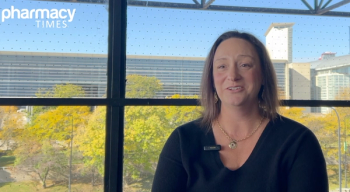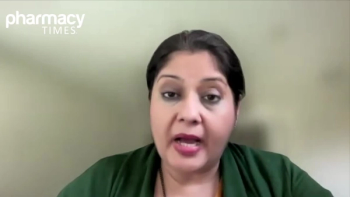Patients with myelofibrosis (MF) often remain on treatment for years, and some experience frequent hospitalizations and require transfusions for recurring disease. The high cost of such hospital visits contribute to a significant unmet medical need, necessitating future research into the factors associated with optimal treatment and disease management outcomes, according to the authors of a study published in Blood Advances.1
Ruxolitinib (RUX, Jakafi; Incyte Corporation), a first-in-class Janus kinase (JAK) inhibitor, has surpassed hydroxyurea (HU) as the standard-of-care in myelofibrosis following its regulatory approval, with trials finding that its use in the first-line setting improves treatment outcomes markedly in patients with MF compared with HU. Ruxolitinib has demonstrated significant approval in clinical studies, but some patients have been found to discontinue therapy following years of treatment.2
Authors of the current investigation note that, in clinical practice, there is no standard definition of treatment failure nor a consensus on factors that may influence a treatment provider to change a patient’s therapy. Furthermore, there is a general lack of understanding on the real-world treatment patterns and impact of currently available JAK inhibitors on patients with MF. In the METER trial (NCT05444972), the current authors sought to fill in gaps regarding treatment patterns, patient outcomes, and health care resource utilization in patients treated for primary or secondary MF.1,3
Across 16 sites in 14 total countries, the investigators reviewed existing patient-level data surrounding factors such as diagnosis, baseline characteristics, treatment patterns, outcomes, and hospitalizations. In total, 997 patients had treatment information available and met eligibility criteria. The most common first-line therapies were RUX (49.0%) and HU (40.2%). Of the total patients, 79.4% remained on treatment through week 24, and 48.5% remained through week 156, but the median duration was 32.0 (95% CI: 26.9-41.0).1
In an important observation, approximately 50% of the enrolled patients experienced a treatment discontinuation or change. Some of the main reasons reported for discontinuing treatment were inadequate response (27.3%), disease progression (17.8%), and toxicity (11.5%). The median time from the initiation of treatment to procedural intervention for patients who needed it was 12.0 (6.4-28.8) months. Common procedures were stem cell transplantation (SCT) and splenectomy; the cumulative incidence of SCT was observed to increase gradually over time, from 2.2% at week 24 to 11% at week 156.1
About the Trial
Trial Name: A Study to Explore Treatment Patterns, Treatment Outcomes, Health Care Resource Utilization in Adult Participants With Myelofibrosis Through Chart Review (METER)
ClinicalTrials.gov ID: NCT05444972
Completion Date: November 14, 2023
The study authors agreed that this observation was notable, as SCT remains the only potentially curative treatment for MF. Positive results surrounding ruxolitinib were reported, with a higher proportion of patients who received HU discontinuing or changing treatments than patients who received RUX. However, the investigators discussed that patients receiving HU may be in a lower risk group due to the specific eligibility criteria for patients to receive RUX.1
Perhaps most critical for future practice is the high number of hospitalizations and transfusion events in this real-world population. The numerically longer overall survival observed for patients not treated with RUX was attributed to the potential for a larger presence of less aggressive disease in the non-RUX patient cohorts.1
“The descriptive findings from this study highlight the need for further studies into treatment patterns, outcomes, and factors associated with outcomes to achieve optimal treatment and disease management in patients with MF,” the study investigators concluded.1
REFERENCES
1. Gupta V, Tomuleasa C, Lampon GIB, et al. Real-world treatment patterns and health care resource use for patients with myelofibrosis: Results from the METER study. Blood Adv. 2024. doi:10.1182/bloodadvances.2024.014625
2. Kuykendall AT, Talati C, Ali NA, et al. The treatment landscape of myelofibrosis before and after ruxolitinib approval. Clin Lymphoma Myeloma Leuk. 2017;17(12):e45-e53. doi:10.1016/j.clml.2017.08.002
3. ClinicalTrials.gov. A study to explore treatment patterns, treatment outcomes, health care resource utilization in adult participants with myelofibrosis through chart review (METER). National Library of Medicine. Updated December 11, 2023. Accessed January 20, 2025. https://clinicaltrials.gov/study/NCT05444972
























































































































































































































